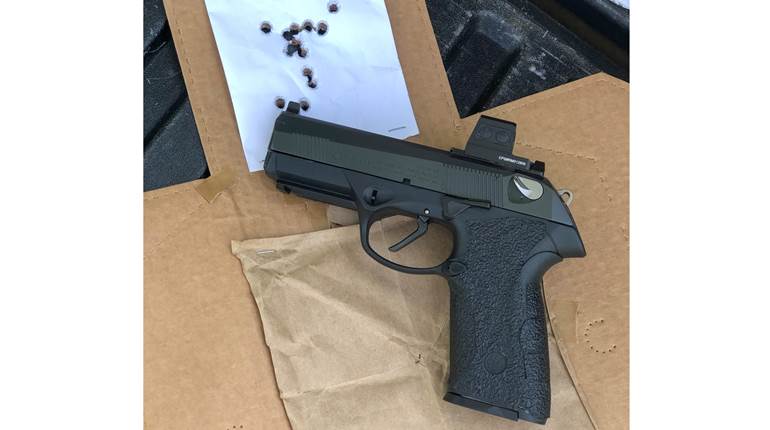
This early Ruger Gunsite Scout rifle has been updated with the factory synthetic stock and is equipped with a Weaver 4X Scout scope in Leupold QR Weaver rings, a five-round Magpul PMAG 5 7.62 AICS magazine, a rubber Hornady Lock-N-Load Bolt Ball and a Manticore Arms Nightbrake muzzle device. A 1" Biothane Rhodesian sling from Andy’s Leather, attached with GrovTec swivels, features a front loop that allows the shooter to create tension between the front QD stud and the support arm’s triceps, greatly aiding stability from a variety of shooting positions.
Rifle slings are an essential component of any rifleman’s kit. Sadly, many modern shooters think of slings as retention devices rather than marksmanship aids, but a properly used shooting sling increases a shooter’s accuracy by removing stability variables.
Shooting slings work by adding mechanical tension to a rifle position without relying upon the body’s musculature. Good marksmanship is about consistency, and that means removing variables like muscles since they fatigue and shake under tension. This is why it’s important to build bone-on-bone support where possible.
Imagine the kneeling position with the support-side elbow resting on the knee. The support-side hand cradles the rifle’s forearm, while the stock tucks into the pocket of the firing-side shoulder. Without a sling, the supporting elbow acts as a hinge and the rifle only stays up via the constant tension of the supporting arm.
A shooting sling turns this open-sided hinge into a closed triangle by connecting the body and support hand with a length of material. This is typically a loop of fabric around the support-side triceps connecting to a point near the supporting hand. In this closed-triangle configuration, muscles do not hold the rifle up since support comes from a combination of sling and bones.
This process works for the prone, sitting and squatting positions as well. Stability with a sling from standing becomes a little more challenging due to lack of support for the supporting elbow. That’s not to say that a shooting sling can’t improve marksmanship from the standing position, it’s simply more difficult.
While taught as shooting aids for generations in the military, slings mostly get used as carrying straps. The primary reason is that a proper “slung-up” position is slow to get into, uncomfortable and often hinders mobility. Luckily, modern designs have moved beyond the classic M1907-style sling.
One excellent iteration that addressed this issue was the classic Ching Sling advocated by Jeff Cooper. This design added a length of material within the sling for the arm, allowing the sling to serve as both a carry strap and marksmanship aid on demand. That design required three sling studs on a rifle. New designs, like the Rhodesian Sling from Andy’s Leather and others, need only two studs and are quick to use in the field, even if they give up a bit of cinching tension.
Other companies bridge the gap between tactical and marksmanship slings by utilizing sliders, bungees and other techniques to cinch the rifle into the shoulder. Using modern adjustable two-point slings can still help stabilize a rifle. Keep in mind that the forward sling-attachment point should still be in front of where your support hand rests to be most effective.
One last tip: While a tighter sling helps improve accuracy, there is a point of diminishing returns. Make the sling tight, but if it’s so tight that you see the reticle or sights bouncing in time with your heart rate, back off the tension just a bit.






































